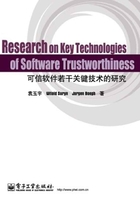
Preface
“…and what he or she perceives at the end corresponds to expressed trust and satisfaction of using a software product that possesses both required functionalities and required quality. When one of them is missing, a painful process of improvements and negotiations may take place to often end by changing the supplier and replacing the product by the one that is mature enough do its job well on both accounts.”[W.Suryn “Maturing Usability”]
With IT market growing exponentially every year and the quantity of information processed hitting 1000 exabytes in 2010, the quality of IT systems that process it becomes crucial. Information Technology (IT) Systems are ubiquitous and their importance is undeniable in our modern world. The societies rely on them in majority of their day-to-day activities. They are present in all aspects of today's human life, from the entertainment field to the most critical sectors.
Furthermore, for a XXI century user a software product or service more and more often corresponds to a black box that must effectively support his needs, be it a home usage of text editor or a support of complicated business processes. In consequence of this natural trend, these needs become a driving force for the research and development efforts that would produce solutions allowing stakeholder/consumer to gradually move to the position of a car buyer and user rather than an involuntary expert in information technology.
This all being said, one may ask the question “is quality enough to make me trust the given system or service?”. Would we trust an IT system that is very reliable in executing wrongly designed service? In both cases the answer is negative, as what we trust must exhibit both functionality and quality. Even then would we trust it fully or only partially? Under which circumstances and in what context? All these questions are root causes for moving trustworthiness of software from the position of specialized research subject to a primary market and technology concern.
This book discusses the importance of software quality engineering, software and service trustworthiness, the existing scientific and practical approaches to both subject and finally presents an innovative trustworthiness measurement and evaluation methodology based on Finite State Machine principle.
The work of this book is supported by National Natural Science Foundation of China (Grant No.61010306008, No.90818006), and APEC project “Trusted business services for SMEs in Asia Pacific Software Training”.